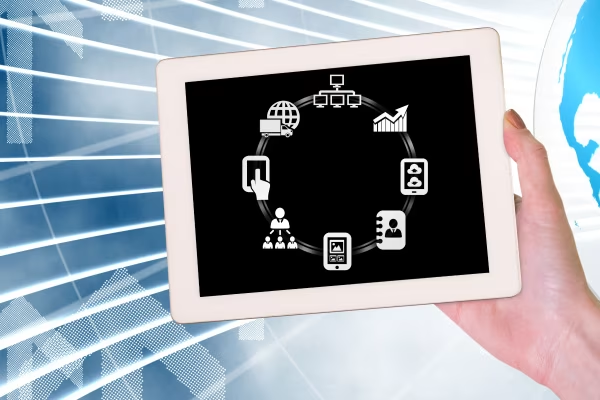
The Role of Edge Computing in IoT Ecosystems
The Internet of Things (IoT) is becoming a key pillar of digital transformation across numerous industries – from smart cities and healthcare to manufacturing, transportation, and smart homes. A vast number of connected devices generate massive amounts of data, raising the question of how to efficiently process and utilize that data in real time. Traditional cloud-based architectures are not sufficient to meet the needs for speed, reliability, and security. In this context, edge computing – data processing at the edge of the network – emerges as a crucial technology that significantly enhances the performance of IoT systems.
What is Edge Computing?
Edge computing is a distributed model of data processing where data is processed close to its source – on the device itself or a local server – instead of being sent to remote data centers. This reduces latency, saves network bandwidth, and improves security by limiting how far data must travel.
Why is Edge Computing Important for IoT?
IoT devices are resource-constrained: they have limited processing power, memory, and rely on energy-efficient solutions. At the same time, many IoT applications require immediate response – for instance, autonomous vehicles, smart industrial systems, or remote health monitoring. Sending data to the cloud, processing it, and returning feedback takes too long for such scenarios. This is where edge computing comes in, allowing the most critical data processing tasks to be handled locally, drastically reducing latency and enabling faster system responses.
How Edge Computing Enhances IoT
- Real-Time Data Processing
One of the biggest advantages of edge computing in IoT is the ability to process data in real time. In traditional systems, data is sent to the cloud, processed, and then feedback is returned – which can take seconds or longer. In time-critical applications like autonomous driving, industrial automation, or health monitoring, even slight delays can have serious consequences. Edge computing enables decisions to be made in milliseconds because the processing happens locally, directly on the device or nearby. - Reduced Latency and Network Offloading
The large number of IoT devices generates vast amounts of data. If all this data were sent to the cloud, it would overwhelm network bandwidth. Edge computing allows data to be filtered and preprocessed at the source, so only relevant data is sent to the cloud, while the rest is kept locally. This saves bandwidth and reduces data transfer costs. - Increased Reliability and Availability
Edge computing enables IoT devices to continue functioning even if the connection to central cloud servers is lost. Edge nodes can make decisions and manage devices locally. This is especially important in critical systems such as smart grids, healthcare infrastructure, or industrial processes, where downtime can lead to significant losses or safety risks. - Enhanced Security and Privacy Protection
Beyond performance, edge computing also provides security benefits. By processing data locally, there's less need to transmit sensitive information over the internet, reducing the risk of interception or data theft. Organizations can more easily comply with data protection regulations since data remains under local control.
Edge Devices and Their Role in IoT Ecosystems
Edge devices are the physical components of the system that enable data collection, processing, and transmission. These include sensors, actuators, gateway devices, cameras, smartphones, and other devices operating at the "edge" of the network.
In smart agriculture, for instance, soil moisture sensors can locally process data and automatically activate irrigation systems without needing central processing. In industry, machine-mounted sensors enable predictive maintenance – detecting irregularities and triggering service procedures before breakdowns occur. In healthcare, smartwatches and medical sensors monitor vital signs and send alerts to doctors in real time. All of this enables faster responses and better outcomes.
Challenges and the Future of Edge Computing in IoT
Although edge computing brings many advantages, there are also challenges. Managing a large number of distributed devices can be technically demanding. Extra attention is needed in terms of security, maintenance, and interoperability among different devices and platforms. Initial infrastructure costs can also be high, even though they often lead to long-term savings.
However, with the development of 5G networks, edge AI, and increasingly powerful hardware solutions, edge computing is expected to play a growing role in IoT innovation. Platforms like Azure IoT Edge, AWS Greengrass, and Google Cloud IoT offer simplified deployment and greater flexibility.
Edge Computing as the Foundation of a Smart and Connected Future
Edge computing is no longer just a technological trend – it has become a key component of modern IoT ecosystems. By enabling local data processing, reduced latency, improved reliability, and better privacy protection, edge solutions are transforming how connected devices operate. In an era where speed of decision-making and data security are critical, edge computing is paving the way for smarter, more agile, and safer digital environments. Its role will become increasingly vital as technologies like 5G, edge AI, and distributed systems continue to evolve and integrate into both everyday life and industrial processes.





